Dec. 17th Event: The Latest on Omicron, Boosters, and Immunity
Kira Peikoff was the editor-in-chief of Leaps.org from 2017 to 2021. As a journalist, her work has appeared in The New York Times, Newsweek, Nautilus, Popular Mechanics, The New York Academy of Sciences, and other outlets. She is also the author of four suspense novels that explore controversial issues arising from scientific innovation: Living Proof, No Time to Die, Die Again Tomorrow, and Mother Knows Best. Peikoff holds a B.A. in Journalism from New York University and an M.S. in Bioethics from Columbia University. She lives in New Jersey with her husband and two young sons. Follow her on Twitter @KiraPeikoff.

The Omicron variant poses new uncertainty for the vaccines, which four leading experts will address during our virtual event on December 17th, 2021.
This virtual event will convene leading scientific and medical experts to discuss the most pressing questions around the new Omicron variant, including what we know so far about its ability to evade COVID-19 vaccines, the role of boosters in eliciting heightened immunity, and the science behind variants and vaccines. A public Q&A will follow the expert discussion.
EVENT INFORMATION:
Date: Friday Dec 17, 2021
2:00pm - 3:30pm EST
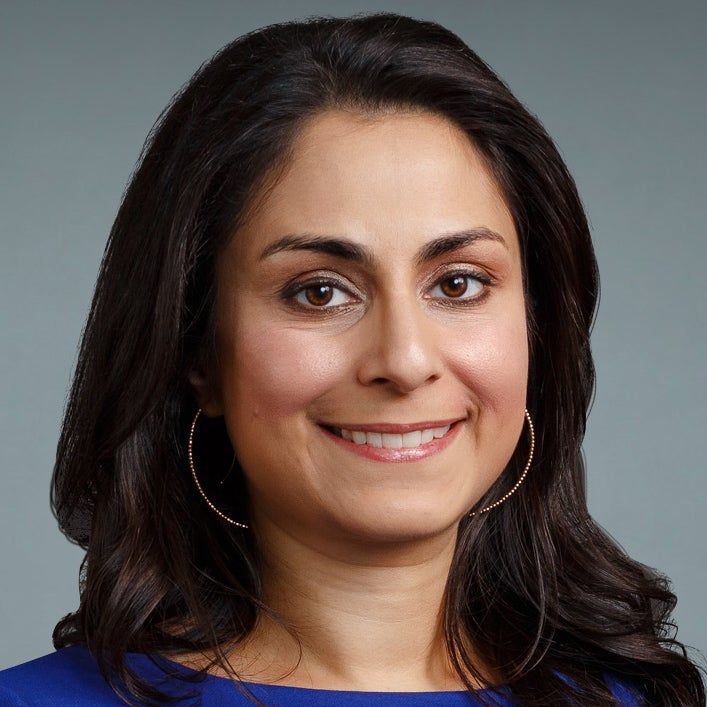
Dr. Céline Gounder, MD, ScM, is the CEO/President/Founder of Just Human Productions, a non-profit multimedia organization. She is also the host and producer of American Diagnosis, a podcast on health and social justice, and Epidemic, a podcast about infectious disease epidemics and pandemics. She served on the Biden-Harris Transition COVID-19 Advisory Board.
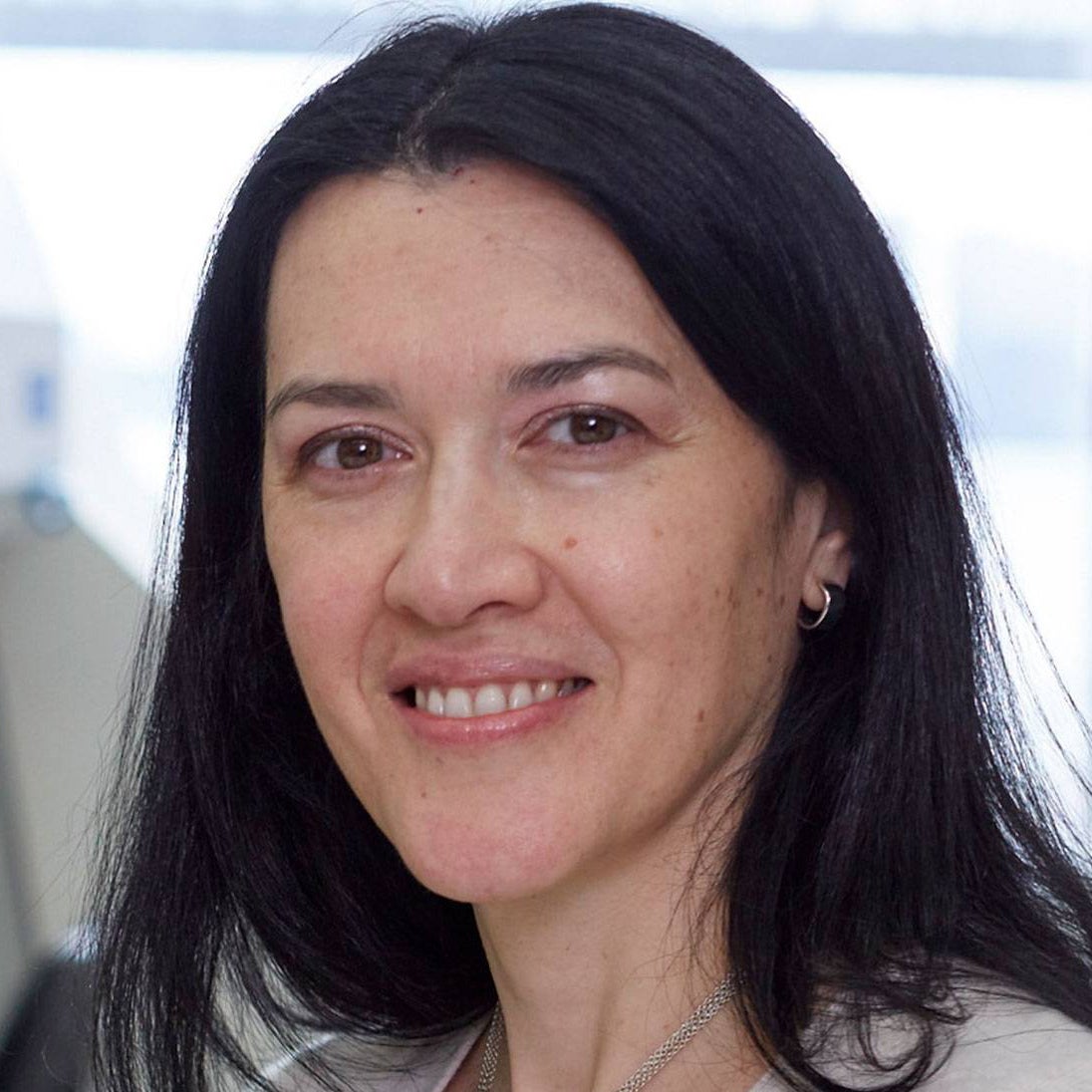 Dr. Theodora Hatziioannou, Ph.D., is a Research Associate Professor in the Laboratory of Retrovirology at The Rockefeller University. Her research includes identifying plasma samples from recovered COVID-19 patients that contain antibodies capable of neutralizing the SARS-CoV-2 coronavirus.
Dr. Theodora Hatziioannou, Ph.D., is a Research Associate Professor in the Laboratory of Retrovirology at The Rockefeller University. Her research includes identifying plasma samples from recovered COVID-19 patients that contain antibodies capable of neutralizing the SARS-CoV-2 coronavirus.
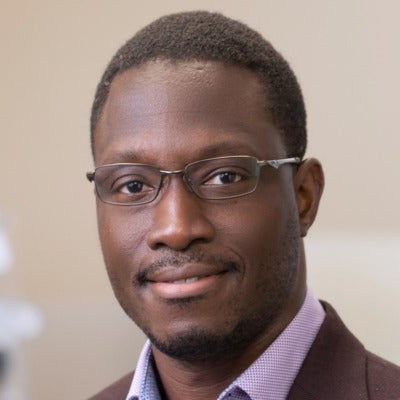
Dr. Onyema Ogbuagu, MBBCh, is an Associate Professor at Yale School of Medicine and an infectious disease specialist who treats COVID-19 patients and leads Yale’s clinical studies around COVID-19. He ran Yale’s trial of the Pfizer/BioNTech vaccine.
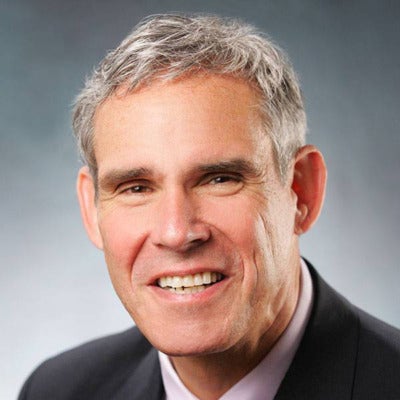
Dr. Eric Topol, M.D., is a cardiologist, scientist, professor of molecular medicine, and the director and founder of Scripps Research Translational Institute. He has led clinical trials in over 40 countries with over 200,000 patients and pioneered the development of many routinely used medications.
This event is the fourth of a four-part series co-hosted by Leaps.org, the Aspen Institute Science & Society Program, and the Sabin–Aspen Vaccine Science & Policy Group, with generous support from the Gordon and Betty Moore Foundation and the Howard Hughes Medical Institute.
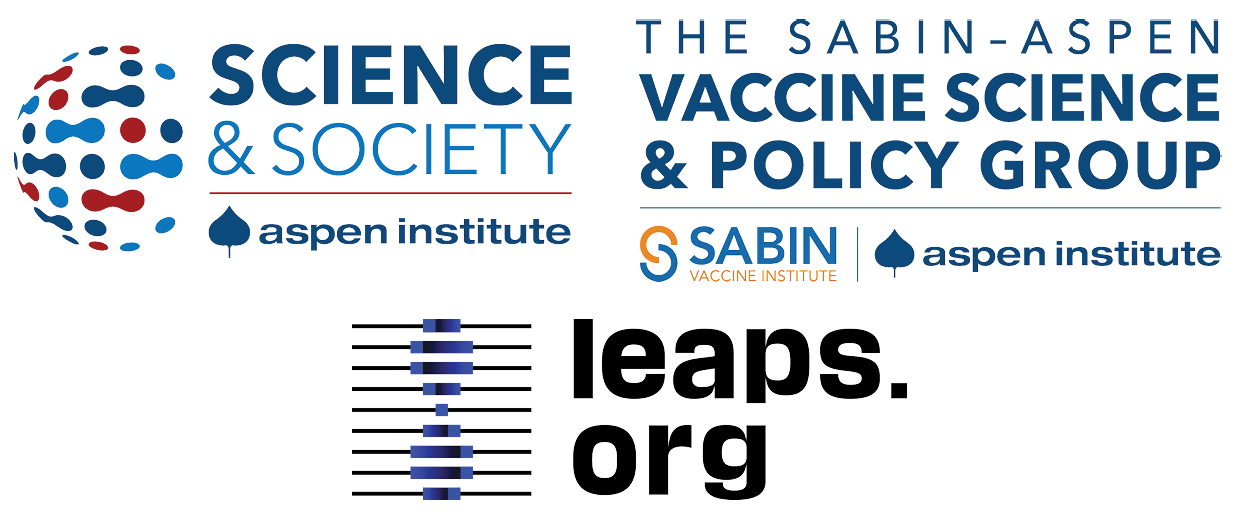
Kira Peikoff was the editor-in-chief of Leaps.org from 2017 to 2021. As a journalist, her work has appeared in The New York Times, Newsweek, Nautilus, Popular Mechanics, The New York Academy of Sciences, and other outlets. She is also the author of four suspense novels that explore controversial issues arising from scientific innovation: Living Proof, No Time to Die, Die Again Tomorrow, and Mother Knows Best. Peikoff holds a B.A. in Journalism from New York University and an M.S. in Bioethics from Columbia University. She lives in New Jersey with her husband and two young sons. Follow her on Twitter @KiraPeikoff.
Taylor Schreiber, now 39, runs an immunotherapy company testing drugs that may be less toxic alternative to chemotherapy.
It looked like only good things were ahead of Taylor Schreiber in 2010.
Schreiber had just finished his PhD in cancer biology and was preparing to return to medical school to complete his degree. He also had been married a year, and, like any young newlyweds up for adventure, he and his wife Nicki decided to go backpacking in the Costa Rican rainforest.
He was 31, and it was April Fool's Day—but no joke.
During the trip, he experienced a series of night sweats and didn't think too much about it. Schreiber hadn't been feeling right for a few weeks and assumed he had a respiratory infection. Besides, they were sleeping outdoors in a hot, tropical jungle.
But the night sweats continued even after he got home, leaving his mattress so soaked in the morning it was if a bucket of water had been dumped on him overnight. On instinct, he called one of his thesis advisors at the Sylvester Comprehensive Cancer Center in Florida and described his symptoms.
Dr. Joseph Rosenblatt didn't hesitate. "It sounds like Hodgkins. Come see me tomorrow," he said.
The next day, Schreiber was diagnosed with Stage 3b Hodgkin Lymphoma, which meant the disease was advanced. He was 31, and it was April Fool's Day—but no joke.
"I was scared to death," he recalls. "[Thank] goodness it's one of those cancers that is highly treatable. But being 31 years old and all of a sudden being told that you have a 30 percent of mortality within the next two years wasn't anything that I was relieved about."
For Schreiber, the diagnosis was a personal and professional game-changer. He couldn't work in the hospital as a medical student while undergoing chemotherapy, so he wound up remaining in his post-doctorate lab for another two years. The experience also solidified his decision to apply his scientific and medical knowledge to drug development.
Today, now 39, Schreiber is co-founder, director and chief scientific officer of Shattuck Labs, an immuno-oncology startup, and the developer of several important research breakthroughs in the field of immunotherapy.
After his diagnosis, he continued working full-time as a postdoc, while undergoing an aggressive chemotherapy regimen.
"These days, I look back on [my cancer] and think it was one of the luckiest things that ever happened to me," he says. "In medical school, you learn what it is to treat people and learn about the disease. But there is nothing like being a patient to teach you another side of medicine."
Medicine first called to Schreiber when his maternal grandfather was dying from lung cancer complications. Schreiber's uncle, a radiologist at the medical center where his grandfather was being treated, took him on a tour of his department and showed him images of the insides of his body on an ultrasound machine.
Schreiber was mesmerized. His mother was a teacher and his dad sold windows, so medicine was not something to which he had been routinely exposed.
"This weird device was like looking through jelly, and I thought that was the coolest thing ever," he says.
The experience led him to his first real job at the Catholic Medical Center in Manchester, NH, then to a semester-long internship program during his senior year in high school in Concord Hospital's radiology department.
"This was a great experience, but it also made clear that there was not any meaningful way to learn or contribute to medicine before you obtained a medical degree," says Schreiber, who enrolled in Bucknell College to study biology.
Bench science appealed to him, and he volunteered in Dr. Jing Zhou's nephrology department lab at the Harvard Institutes of Medicine. Under the mentorship of one of her post-docs, Lei Guo, he learned a range of critical techniques in molecular biology, leading to their discovery of a new gene related to human polycystic kidney disease and his first published paper.
Before his cancer diagnosis, Schreiber also volunteered in the lab of Dr. Robert "Doc" Sackstein, a world-renowned bone marrow transplant physician and biomedical researcher, and his interests began to shift towards immunology.
"He was just one of those dynamic people who has a real knack for teaching, first of all, and for inspiring people to want to learn more and ask hard questions and understand experimental medicine," Schreiber says.
It was there that he learned the scientific method and the importance of incorporating the right controls in experiments—a simple idea, but difficult to perform well. He also made what Sackstein calls "a startling discovery" about chemokines, which are signaling proteins that can activate an immune response.
As immune cells travel around our bodies looking for potential sources of infection or disease, they latch onto blood vessel walls and "sniff around" for specific chemical cues that indicate a source of infection. Schreiber and his colleagues designed a system that mimics the blood vessel wall, allowing them to define which chemical cues efficiently drive immune cell migration from the blood into tissues.
Schreiber received the best overall research award in 2008 from the National Student Research Foundation. But even as Schreiber's expertise about immunology grew, his own immune system was about to fight its hardest battle.
After his diagnosis, he continued working full-time as a postdoc in the lab of Eckhard Podack, then chair of the microbiology and immunology department at the University of Miami's Leonard M. Miller School of Medicine.
At the same time, Schreiber began an aggressive intravenous chemotherapy regimen of adriamycin, bleomycin, vincristine and dacarbazine, every two weeks, for 6 months. His wife Nicki, an obgyn, transferred her residency from Emory University in Atlanta to Miami so they could be together.
"It was a weird period. I mean, it made me feel good to keep doing things and not just lay idle," he said. "But by the second cycle of chemo, I was immunosuppressed and losing my hair and wore a face mask walking around the lab, which I was certainly self-conscious. But everyone around me didn't make me feel like an alien so I just went about my business."
The experience reinforced his desire to stay in immunology, especially after having taken the most toxic chemotherapies.
He stayed home the day after chemo when he felt his worst, then rested his body and timed exercise to give the drugs the best shot of targeting sick cells (a strategy, he says, that "could have been voodoo"). He also drank "an incredible" amount of fluids to help flush the toxins out of his system.
Side effects of the chemo, besides hair loss, included intense nausea, diarrhea, a loss of appetite, some severe lung toxicities that eventually resolved, and incredible fatigue.
"I've always been a runner, and I would even try to run while I was doing chemo," he said. "After I finished treatment, I would go literally 150 yards and just have to stop, and it took a lot of effort to work through it."
The experience reinforced his desire to stay in immunology, especially after having taken the most toxic chemotherapies.
"They worked, and I could tolerate them because I was young, but people who are older can't," Schreiber said. "The whole field of immunotherapy has really demonstrated that there are effective therapies out there that don't come with all of the same toxicities as the original chemo, so it was galvanizing to imagine contributing to finding some of those."
Schreiber went on to complete his MD and PhD degrees from the Sheila and David Fuente Program in Cancer Biology at the Miller School of Medicine and was nominated in 2011 as a Future Leader in Cancer Research by the American Association for Cancer Research. He also has numerous publications in the fields of tumor immunology and immunotherapy.
Sackstein, who was struck by Schreiber's enthusiasm and "boundless energy," predicts he will be a "major player in the world of therapeutics."
"The future for Taylor is amazing because he has the capacity to synthesize current knowledge and understand the gaps and then ask the right questions to establish new paradigms," said Sackstein, currently dean of the Herbert Wertheim College of Medicine at Florida International University. "It's a very unusual talent."
Since then, he has devoted his career to developing innovative techniques aimed at unleashing the immune system to attack cancer with less toxicity than chemotherapy and better clinical results—first, at a company called Heat Biologics and then at Pelican Therapeutics.
His primary work at Austin, Texas-based Shattuck is aimed at combining two functions in a single therapy for cancer and inflammatory diseases, blocking molecules that put a brake on the immune system (checkpoint inhibitors) while also stimulating the immune system's cancer-killing T cells.
The company has one drug in clinical testing as part of its Agonist Redirected Checkpoint (ARC) platform, which represents a new class of biological medicine. Two others are expected within the next year, with a pipeline of more than 250 drug candidates spanning cancer, inflammatory, and metabolic diseases.
Nine years after his own cancer diagnosis, Schreiber says it remains a huge part of his life, though his chances of a cancer recurrence today are about the same as his chances of getting newly diagnosed with any other cancer.
"I feel blessed to be in a position to help cancer patients live longer and could not imagine a more fulfilling way to spend my life," he says.
The Stunning Comeback of a Top Transplant Surgeon Who Got a New Heart at His Own Hospital
Dr. Robert Montgomery, almost one year post-transplant, at a vineyard in Casablanca, Chile, August 2019.
Having spent my working life as a transplant surgeon, it is the ultimate irony that I have now become a heart transplant patient. I knew this was a possibility since 1987, when I was 27 years old and I received a phone call from my sister-in-law telling me that my 35-year-old brother, Rich, had just died suddenly while water skiing.
Living from one heartbeat to the next I knew I had to get it right and nail my life—and in that regard my disease was a blessing.
After his autopsy, dots were connected and it was clear that the mysterious heart disease my father had died from when I was 15 years old was genetic. I was evaluated and it was clear that I too had inherited cardiomyopathy, a progressive weakening condition of the heart muscle that often leads to dangerous rhythm disturbances and sudden death. My doctors urged me to have a newly developed device called an implantable cardioverter-defibrillator (ICD) surgically placed in my abdomen and chest to monitor and shock my heart back into normal rhythm should I have a sudden cardiac arrest.
They also told me I was the first surgeon in the world to undergo an ICD implant and that having one of these devices would not be compatible with the life of a surgeon and I should change careers to something less rigorous. With the support of a mentor and armed with what the British refer to as my "bloody-mindedness," I refused to give up this dream of becoming a transplant surgeon. I completed my surgical training and embarked on my career.
What followed were periods of stability punctuated by near-death experiences. I had a family, was productive in my work, and got on with life, knowing that this was a fragile situation that could turn on its head in a moment. In a way, it made my decisions about how to spend my time and focus my efforts more deliberate and purposeful. Living from one heartbeat to the next I knew I had to get it right and nail my life—and in that regard my disease was a blessing.
In 2017 while pursuing my passion for the outdoors in a remote part of Patagonia, I collapsed from bacterial pneumonia and sepsis. Unknowingly, I had brought in my lungs one of those super-bugs that you read about from the hospital where I worked. Several days into the trip, the bacteria entered my blood stream and brought me as close to death as a human can get.
I lay for nearly 3 weeks in a coma on a stretcher in a tiny hospital in Argentina, septic and in cardiogenic shock before stabilizing enough to be evaced to NYU Langone Hospital, where I was on staff. I awoke helpless, unable to walk, talk, or swallow food or drink. It was a long shot but I managed to recover completely from this episode; after 3 months, I returned to work and the operating room. My heart rebounded, but never back to where it had been.
Then, on the eve of my mother's funeral, I arrested while watching a Broadway show, and this time my ICD failed to revive me. There was prolonged CPR that broke my ribs and spine and a final shock that recaptured my heart. It was literally a show stopper and I awoke to a standing ovation from the New York theatre audience who were stunned by my modern recreation of the biblical story of Lazarus, or for the more hip among them, my real-life rendition of the resurrection of Jon Snow at the end of season 5 of Game of Thrones.
Against the advice of my doctors, I attended my mom's funeral and again tried to regain some sense of normalcy. We discussed a transplant at this point but, believe it or not, there is such a scarcity of organs I was not yet "sick enough" to get enough priority to receive a heart. I had more surgery to supercharge my ICD so it would be more likely to save my life the next time -- and there would be a next time, I knew.
As a transplant surgeon, I have been involved in some important innovations to expand the number of organs available for transplantation.
Months later in Matera, Italy, where I was attending a medical meeting, I developed what is referred to as ventricular tachycardia storm. I had 4 cardiac arrests over a 3-hour period. With the first one, I fell on to a stone floor and split my forehead open. When I arrived at the small hospital it seemed like Patagonia all over again. One of the first people I met was a Catholic priest who gave me the Last Rights.
I knew now was the moment and so with the help of one of my colleagues who was at the meeting with me and the compassion of the Italian doctors who supplied my friend with resuscitation medications and left my IV in place, I signed out of the hospital against medical advice and boarded a commercial flight back to New York. I was admitted to the NYU intensive care unit and received a heart transplant 3 weeks later.
Now, what I haven't said is that as a transplant surgeon, I have been involved in some important innovations to expand the number of organs available for transplantation. I came to NYU in 2016 to start a new Transplant Institute which included inaugurating a heart transplant program. We hired heart transplant surgeons, cardiologists, and put together a team that unbeknownst to me at the time, would save my life a year later.
It gets even more interesting. One of the innovations that I had been involved in from its inception in the 1990s was using organs from donors at risk for transmitting viruses like HIV and Hepatitis C (Hep C). We popularized new ways to detect these viruses in donors and ensure that the risk was minimized as much as possible so patients in need of a life-saving transplant could utilize these organs.
When the opioid crisis hit hard about four years ago, there were suddenly a lot of potential donors who were IV drug users and 25 percent of them were known to be infected with Hep C (which is spread by needles). In 2018, 49,000 people died in the U.S. from drug overdoses. There were many more donors with Hep C than potential recipients who had previously been exposed to Hep C, and so more than half of these otherwise perfectly good organs were being discarded. At the same time, a new class of drugs was being tested that could cure Hep C.
I was at Johns Hopkins at the time and our team developed a protocol for using these Hep C positive organs for Hep C negative recipients who were willing to take them, even knowing that they were likely to become infected with the virus. We would then treat them after the transplant with this new class of drugs and in all likelihood, cure them. I brought this protocol with me to NYU.
When my own time came, I accepted a Hep C heart from a donor who overdosed on heroin. I became infected with Hep C and it was then eliminated from my body with 2 months of anti-viral therapy. All along this unlikely journey, I was seemingly making decisions that would converge upon that moment in time when I would arise to catch the heart that was meant for me.

Dr. Montgomery with his wife Denyce Graves, September 2019.
(Courtesy Montgomery)
Today, I am almost exactly one year post-transplant, back to work, operating, traveling, enjoying the outdoors, and giving lectures. My heart disease is gone; gone when my heart was removed. Gone also is my ICD. I am no longer at risk for a sudden cardiac death. I traded all that for the life of a transplant patient, which has its own set of challenges, but I clearly traded up. It is cliché, I know, but I enjoy every moment of every day. It is a miracle I am still here.

